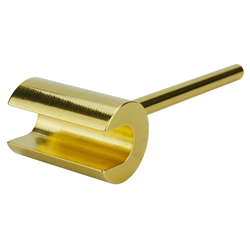An isolated track section is a section of model railway track that is physically connected to other tracks on a...
No products
Product successfully added to your shopping cart
There are 0 items in your cart. There is 1 item in your cart.
Search Tips
What is EM gauge?
The EM gauge refers to a specific track gauge that falls between the standard OO gauge and P4 standards. The term "EM" stands for "Eighteen Millimetre," denoting the distance between the inner edges of the rail heads.
The EM gauge is set at 18.2mm, which is closer to the prototypical 4ft 8½in (1,435mm) standard gauge used on real railways.
The main advantage of the EM gauge is that it allows for more realistic modelling of prototypes, with less distortion of track and wheel dimensions compared to the OO gauge. At the same time, it is not as exacting as the P4 gauge, making it a popular choice for many modellers who seek improved realism without the additional challenges associated with the finer P4 standard.
The EM gauge can be seen as a compromise between the overscale OO gauge (16.5mm) and the more prototypically accurate P4 gauge (18.83mm).
Many manufacturers in the UK produce track, wheels, and other components specifically for the EM gauge, catering to the significant number of modellers who have adopted this gauge as their preferred standard for more accurate scale modelling.
Click here to receive the tips weekly in your mailbox. You can unsubscribe at any time.








